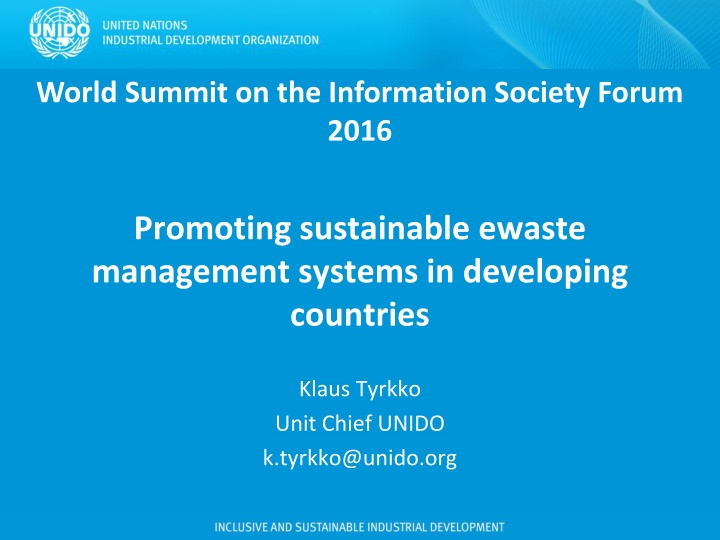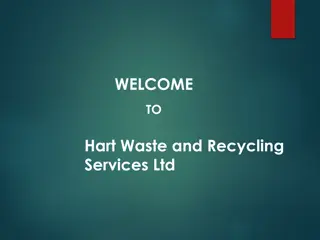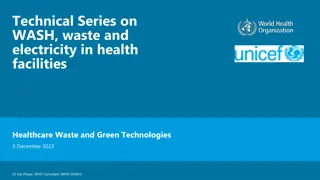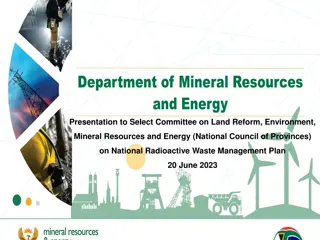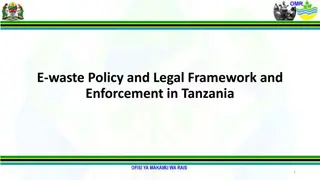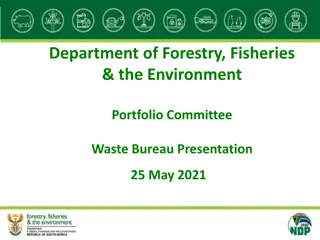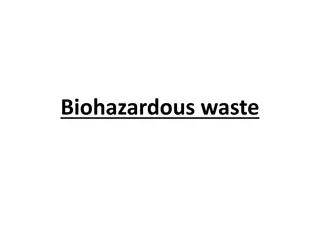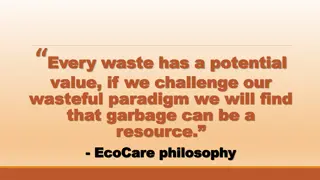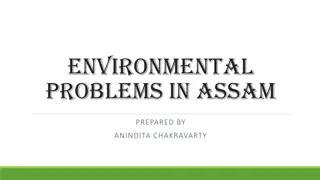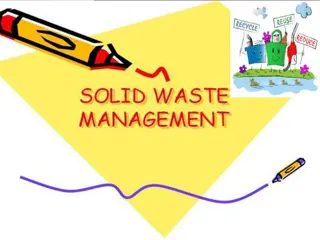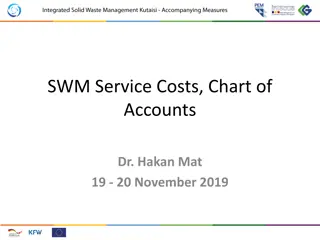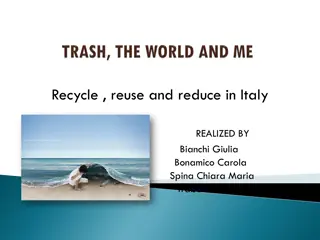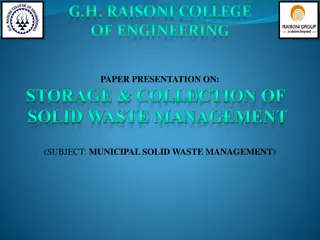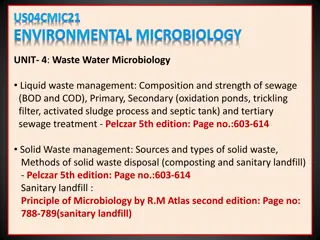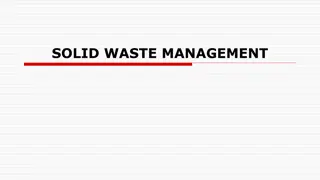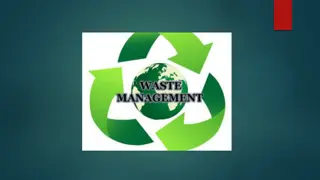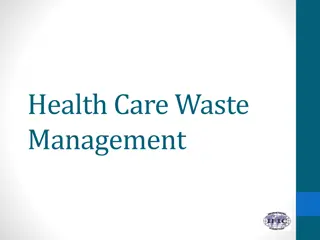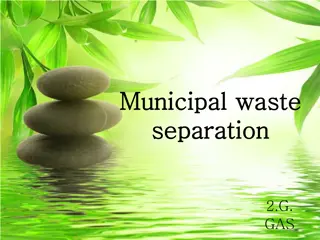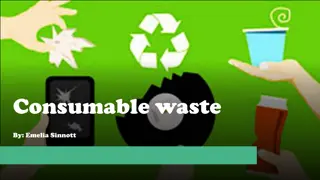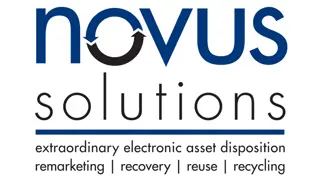Promoting Sustainable E-Waste Management Systems in Developing Countries
This forum discusses the establishment of sustainable e-waste management systems in developing countries. Key pillars, elements, and UNIDO's approach are outlined, focusing on capacity-building, policy development, and market connections. The process involves inventory assessment, design of collection schemes, national treatment options, market connections, policy development, and capacity building.
Download Presentation

Please find below an Image/Link to download the presentation.
The content on the website is provided AS IS for your information and personal use only. It may not be sold, licensed, or shared on other websites without obtaining consent from the author.If you encounter any issues during the download, it is possible that the publisher has removed the file from their server.
You are allowed to download the files provided on this website for personal or commercial use, subject to the condition that they are used lawfully. All files are the property of their respective owners.
The content on the website is provided AS IS for your information and personal use only. It may not be sold, licensed, or shared on other websites without obtaining consent from the author.
E N D
Presentation Transcript
World Summit on the Information Society Forum 2016 Promoting sustainable ewaste management systems in developing countries Klaus Tyrkko Unit Chief UNIDO k.tyrkko@unido.org
How to establish a sustainable E-Waste Management system?
General UNIDO E-Waste concept UNIDO helps build and consolidate local capacities to promote sustainable e- waste recycling industries, through the whole life cycle of electric and electronic devices, to recover efficiently valuable resources, while generating quality jobs and caring about the environment and health. Distribution& Consumption Collection Pre-Processing End-Processing Disposal Supporting green industries that safeguard the environment and create quality jobs Promoting partnerships for knowledge exchange and technology transfer Helping countries develop their e-waste management systems and strategies based on the whole recycling chains and life-cycle Enhancing North-South, South-South and triangular cooperation and knowledge sharing
Key pillars of sustainable e-waste management $ Marketing &Awareness Policy& Legislation Monitoring & Control Business& Financing Technology & Skills EXAMPLES Planning Dismantling Facility General information on E-waste General assessment Exploring partnerships PILOT PHASE Supporting Existing SME s Direct TA for Import ban on ODS fridges IMPLEMENTATION operators action Develop Strict Establish dismantling/ recycling facility Midterm Awareness campaign Supporting competition Independent Auditing body purchasing policies solutions Certification of Sustainable self-finace scheme Longterm Legislation on E-Waste facility Sustainable Auditing system (int. standards) solutions
Key elements of UNIDOs approach 1. Detailed inventory of existing volumes and ongoing initiatives 2. Design of collection and processing schemes 3. Set-up / up-scale of national e-waste treatment options, including the establishment of sustainable business models 4. Connection to downstream markets on national, regional and international level in accordance with international conventions, e.g. Basel Convention 5. Policy and legislation development or enhancement, including collection strategies and financing mechanisms 6. Capacity building, training and awareness-raising
Process of E-Waste Flows INPUT TREATMENT OUTPUT MANUAL DISMANTLING FURTHER TREATMENT DOWNSTREAM OPTIONS RECEIVING COLLECTION Hot Wire Separation (Lead glass screen) SCREENS (TV, CRTs, LCDs..) Individuals (via Collection Points) STORAGE TRANSPORT: Transport B2B Decon- tamination Hg-Lamps (Companies/ Organizations) LAMPS Weighing Sorting Pre-Processing Storing Local Degasification (CFCs) Informal Sector (Scavengers,...) White Goods (Fridges,...) Regional/ Cross- national Cable- Stripping Refurbishment Small WEEE Plastic Shredder Inter- national/ Oversea Legend: Batteries WEEE Pb, Acids,... FACILITY Fractions (non-hazardous) Hazardousfractions/ waste 6
Example: Ethiopia Project Site: Akaki/Addis Ababa CRT Cutting Cable Shredding Plastic Shredding Intermediate Storage Dismantling workstation
OUTPUT Downstream Markets regional and international buyers - Non-hazardous outputs: national/ regional markets - Hazardous outputs: international smelters Identify environmentally and socially sound potential local, Analyze the purchasing conditions and business models of potential buyers and their branches Take into account: - Quality and contamination of material outputs - International conventions on hazardous waste transport - Administrative and legal restrictions - Local and World market prices
Revenues/ Costs of Manual WEEE Dismantling (USD/year)
UNIDO E-Waste management portfolio Ongoing: Uganda: Establishment of a manual dismantling facility for WEEE Tanzania: Component on E-waste management (One UN Programme) Ethiopia: E-waste Management Project Cambodia: Creating job opportunities & effective e-waste management Pipeline: Regional e-waste project for Latin America Regional e-waste project for ECOWAS Regional e-waste project for SADC
